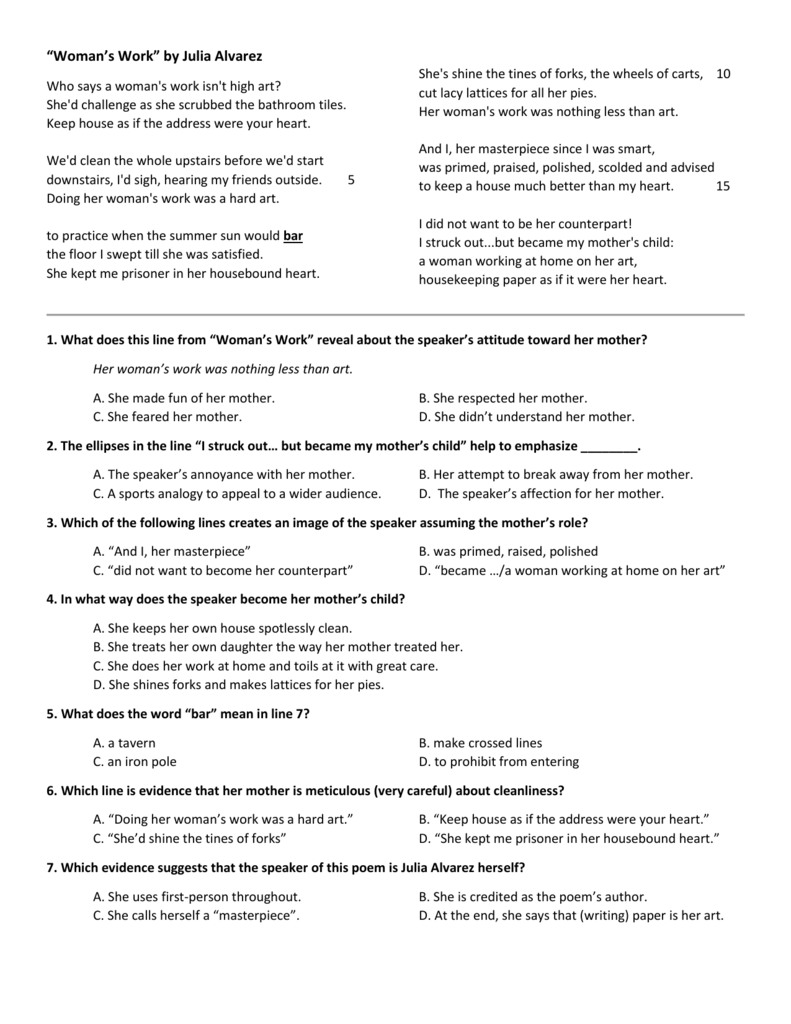

But now I can picture the puffy sleeves and lace binding. With the help of google I understood what puckered sleeves and tucked yokes were, as I am not up on clothing lingo. Here the poet is letting us see her the project her mother was working on. This example from “New Clothes” shows sensory image. “She smiled: puckered sleeves, tucked yokes, lace binding on every seam” (New Clothes, 6) “Everyone seemed more American/than we, newly arrived,/foreign dirt still on out soles.” (Queens, 1-3) After reading about the sisters and their movement I knew what Alvarez was running from when her family fled back to the United states. I could understand more of her background and where all these poems where coming from.

I have read The time of the Butterflies by Julia Alvarez which allowed me to understand her poems to a fuller extent.

“But I refused with every mark/to be like her, anonymous.” (Dusting, 17-18) Alvarez wanted to be a different poet and not be like the rest. Alvarez states that in school she was taught literature about ships and war and thought why can’t it be from the voice of a mother talking about fabrics.

They aren’t a made-up story, it is a true story or one very similar that is easy to connect with, not because the same thing is happening in your life but because it is real. In Alvarez’s reflection on writing “Dusting” she states “finally, I took the leap and began to write poems in my own voice and the voices of the women in my past,” her poems are based on her life and on the lives of people she knew. Alvarez’s poems are different to many that I have read, she writes from her own perspective and many who are like her. She represents our country of immigrants but also people every day who feel they do not fit in and try to in a new situation. "Each morning I wrote my name/ on the dusty cabinet, then crossed/ the dining table in script, scrawled/ in capitals on the back of chairs/ practicing signatures like scales" (lines 1-5).This poet, Julia Alvarez, stands for so many people in the United States and other countries. This is because they represent her mother wiping them away, meaning, her mom wipes away all her dreams that she wants to pursue. "Dusting," by Julia Alvarez, the poet uses her imprints as symbolism in the poem. The poet seems to be keeping his metaphor fused unto the one image of a cat-fog. There is also repetition of the word, "on," in this poem. Lines 5-6, "on silent haunches and then moves on," extending the explanation that the fog looking catlike is sitting and looking, "on silent haunches" (cat's thighs, parts that enable a cat to jump and pounce as far as they'd like to). There are others that are also anxious to see what is in store. The word, "city," in this poem describes that maybe we aren't the only ones experiencing it. The fog is, "over," us, like it is watching over every move. The mood of this poem is kind of frightening, interrogating. We imagine the metaphor in the first stanza as a fog looking catlike, but not the fog is, "sitting," just like a cat would, with their body spread out like fog does. In line 3, "It sits looking over harbor and city," tell us it has taken up more space now. The line also gives us the idea that the fog is moving slowly towards us creeping its way through, just like a cat is very slow and cautious. In this poem, he is straightforward with his ideas, getting right to the point he is trying to make. "Fog" by Carl Sandburg starts off right with a metaphor, he says, "The fog comes on little cat feet," it is also imagery because he wants us to imagine the fog in a catlike way. The poem, "Fog," by Carl Sandburg, and the poem, "Dusting," by Julia Alvarez, show literary elements including imagery, figurative language, sound, rhythm.


 0 kommentar(er)
0 kommentar(er)
